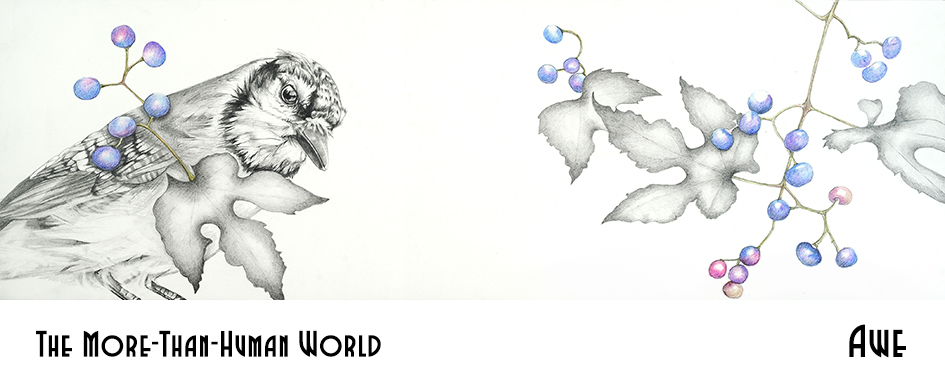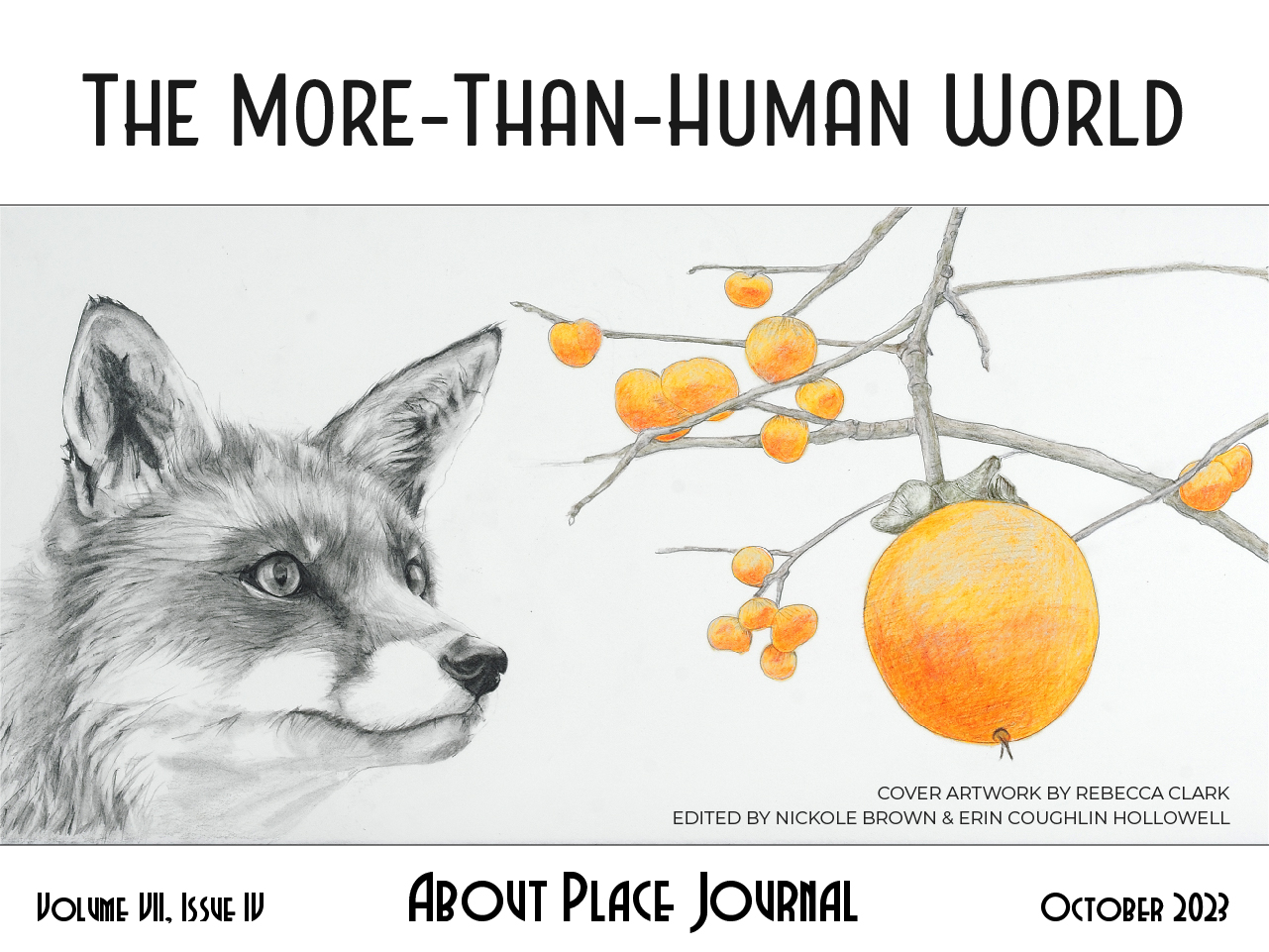and sometimes rain, finch song, the trill of mockingbirds.
When storms muscle up the coast, watch me stand rooted—
I’ll bend and sway, go straight again, companionable
in the canopy, bolstered by the charm of countless unseen tethers.
You should know my portion of the forest floor is a forum
for shared communications, a network of vital nerves
for moods and messaging, deep-dives down through the fungal
filaments. Bark’s tough but still a skin that breathes, sends out songs
picked up by the finest sensors—a tune for storms
and shifts in seasons, drifting snow or dropping leaves.
Today I saw a heron glide overhead, straight through a violet dusk.
You’d be surprised by what turns up—the cardinal, red plume
of paint across the field, a snakeskin unfurled beside the gravel path
along a lawn trimmed back from the wild. I think I’m still learning
to hear a coyote’s call, how it differs from the fox. I love how
each will tack toward the edge of any setting, the flicked tells
of their tails a distraction for these darker days of tipping
point and carbon sink. Listen, once I was luminous—
fireflies flared their cold light through a dark so profound
you couldn’t rinse from my crown their countless falling constellations.


